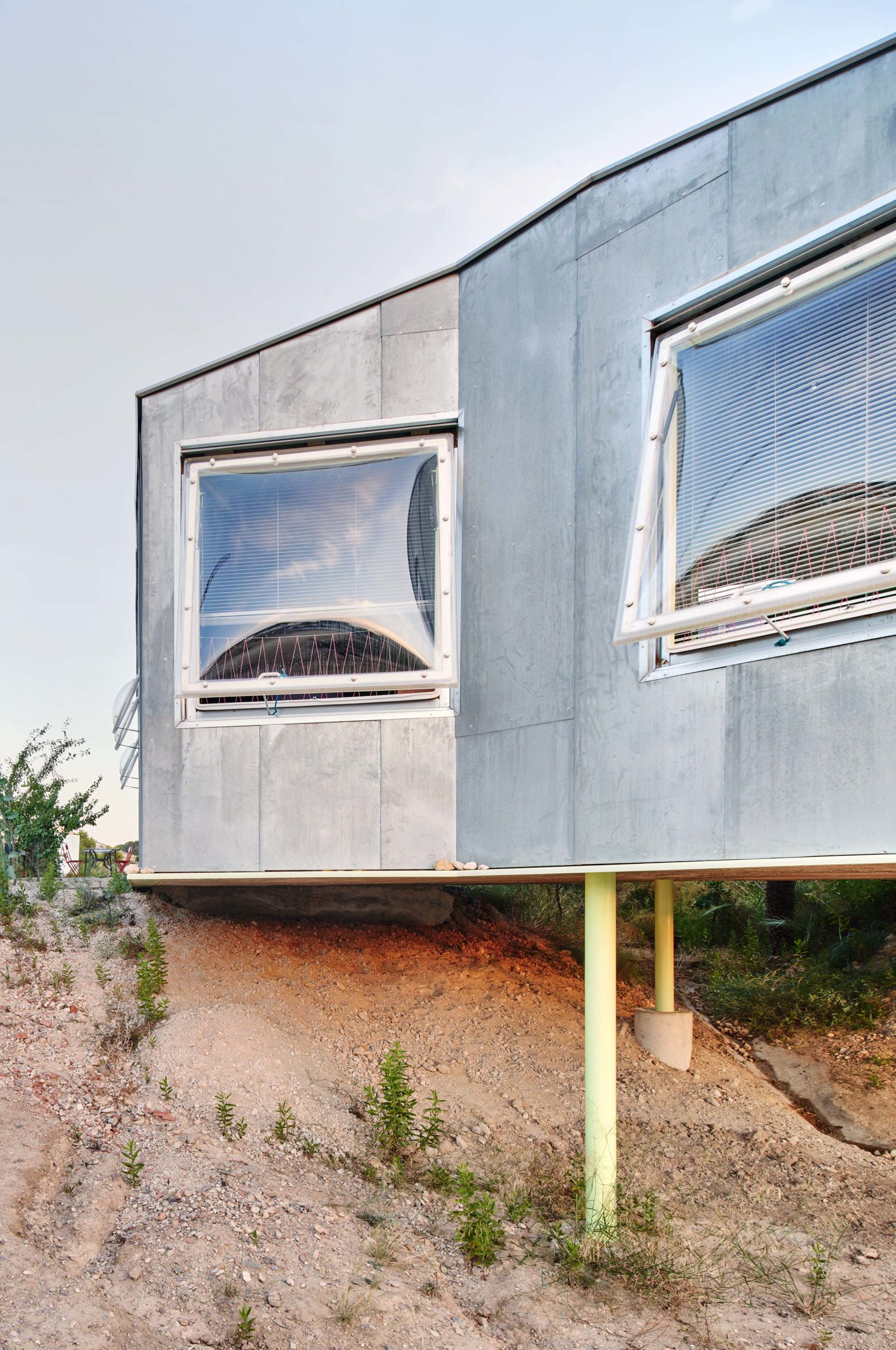As it does everywhere, suburban development in Molina de Segura, in the Murcia region of eastern Spain, flattens topography and destabilizes environments. Enter the Rambla Climate-House, which in its small way stages an act of ecological resistance.
Perched on a rambla (ravine), the tent-like structure circles its wagons around a planted void. The modest three-bedroom house collects, filters, and stores its graywater, which is then sprayed, via sensor-controlled misters installed in a “crown,” onto the landscape when the humidity drops. Hot water comes from a rooftop coil, and in the summer inhabitants—a family of four humans, as well as cats and rabbits—cool off through contact with a marble walkway. (The residence has no air-conditioning.) Rather than “invisibilize” its systems, the home puts them on display.

Architecture is a “climatic life support device,” Andrés Jaque, founder of the Office for Political Innovation (OFFPOLINN) and associate professor of professional practice at Columbia Graduate School of Architecture, Planning and Preservation, (GSAPP) told AN Interior. This particular apparatus is the result of OFFPOLINN’s collaboration with architect Miguel Mesa del Castillo, edaphologist María Martínez-Mena, and ecologists Paz Parrondo Celdrán and Rubén Vives. Jaque hopes that the house’s DIY implements—the solar water heater and the misting sprinklers, for example—can make an impression on neighbors, in turn spreading ecological awareness to individuals who might otherwise see themselves as powerless within the global climate crisis.

For Jaque, politics in architecture isn’t something to be added after the fact, but is embedded in its mechanical systems, structures, and shapes. Architects should consider their work a “form of expert activism,” he said. The Rambla Climate-House does this through its aquatic loops, but also through design.
Far from a typical courtyard house, which establishes a protected interior, Jaque invites the contingent and the unstable. Outside, the ringed gabled roof wobbles: At times the steel deck widens to cover indoor rooms or turns up into a tall header over the patio. Glazing opens to the southern street and terrace, with parking tucked underneath, while other facades have smaller, bubbled windows. The living spaces, uniformly painted bright green, provide a pleasant atmosphere without being precious. They’re also cheap: “Interiors are where I don’t want to put the money,” Jaque said.

Composition has come back into architectural culture, but at the Rambla Climate-House, it’s used not to make static images but to choreograph assemblages of flows. The project intervenes in the local environment to improve its conditions for human and nonhuman residents alike. It’s a place where the systems of life—now “visibilized”—collide.
